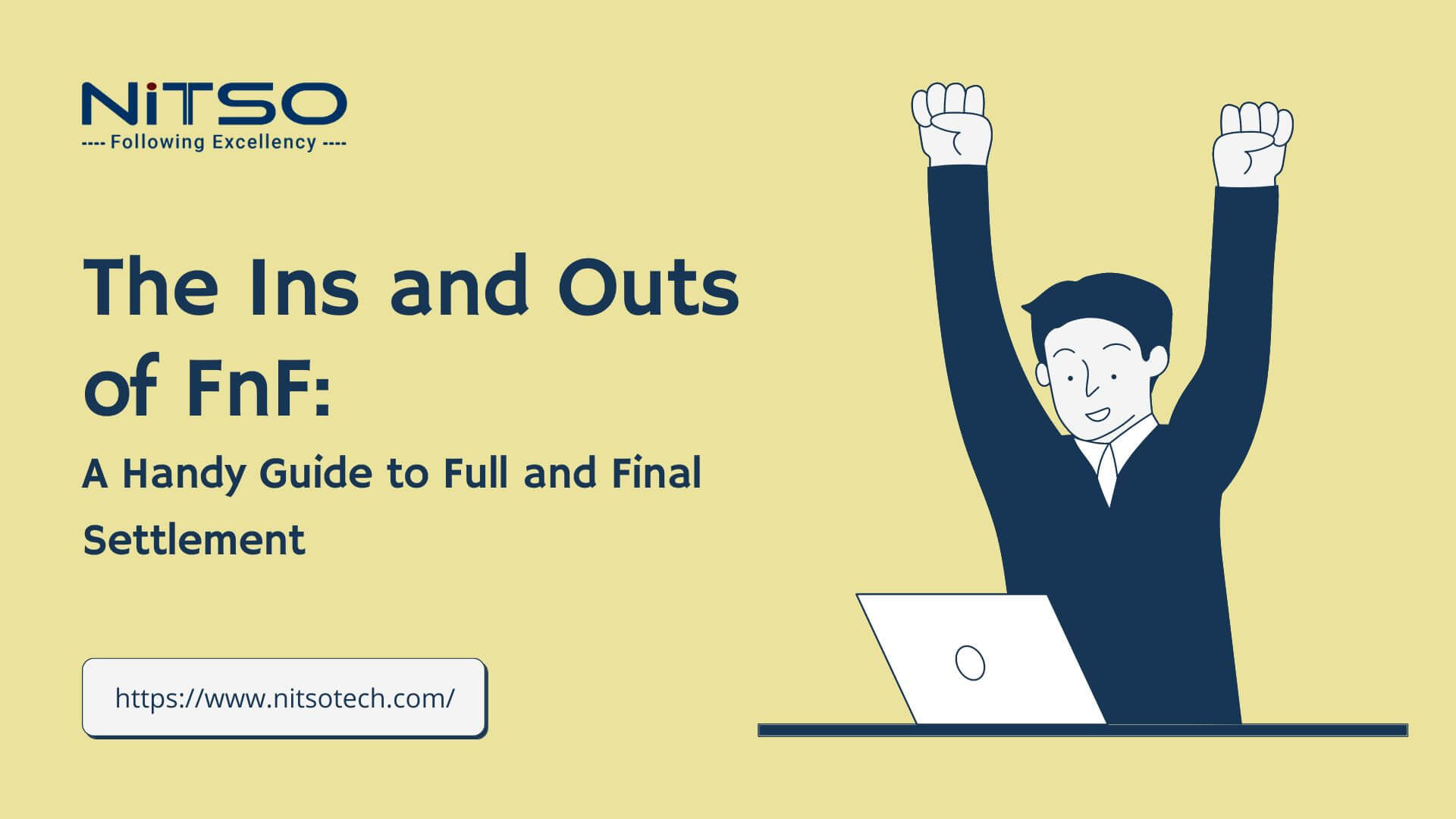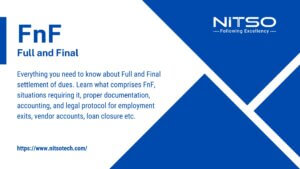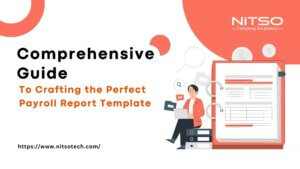Parting ways with an employer inevitably involves paperwork to settle accounts. The full and final (FnF) settlement is the last paycheck and financial settlement between an employer and an exiting employee encompassing all pending dues.
But what exactly does the full and final settlement comprise? When is it due to an employee? What are the calculation nuances involved? As an employer, what should you keep in mind when preparing FnF settlements? This article will provide in-depth insights into full and final payments in payroll.
Table of Contents
What is FnF (Full and Final) Settlement in Payroll?
When an employee’s journey with an organization comes to an end, whether due to resignation, termination, retirement or any other reason, the final step is the closure of their employment relationship with the company through a full and final settlement.
Full and final (FnF) settlement essentially refers to the final payment provided by an employer to the outgoing employee to sever the employee-employer relationship in a fair and transparent manner. It is the last paycheck and includes all outstanding dues owed to the employee that remain unpaid at the time of separation from the company.
A full and final settlement is mandatory in India by law for any establishment with over 10 employees when an employee leaves service. The payment should be made on the last working day or within two days.
Understanding India’s Policy for FnF Settlement
The policies and regulations related to the full and final settlement of employees in India are governed by the Payment of Wages Act 1936, the Industrial Disputes Act 1947, and the state-specific Shops & Establishment Act applicable in the location where the company operates.
According to the Payment of Wages Act 1936, all wages due to an employee must be paid before their employment is terminated. The wages include salary, overtime, bonuses, commissions and any other remuneration. This payment should be made on the same day as their last working day. If an employee is laid off, the payment must be made within two working days of terminating them.
The Industrial Disputes Act of 1947 mandates that employers with over 100 employees must provide one month’s written notice or one month’s gross wages instead of notice for retrenchment or closure. The due wages must be paid immediately if the worker has been terminated. Any non-payment can be disputed by employees in a labour court.
Additionally, the Employees’ Provident Funds and Miscellaneous Provisions Act 1952 makes it compulsory for the employer to settle the employee’s EPF dues by transferring the accumulations and interest amount at the time of FnF settlement.
Compliance with these labour laws and acts ensures full and final settlement adheres to the statutory norms and employees can claim settlement of legal dues if denied by an employer during termination or resignation.
Key Components that Make Up Your Final Paycheck
Full and final settlement is calculated by accounting for various components like salary for days worked, leave balance payments, incentives due, gratuity, Provident Fund, notice pay and more as per company policies. The major components are:
- Salary – This includes any pending salary for days worked during the last month of employment, applicable till the last working day.
- Leave encashment – Payment for any unused and accumulated leave like earned leave, sick leave etc. as per company policy. The amount is calculated based on the number of unused leave days and daily gross salary.
- Bonus/Incentives – Applicable yearly bonuses, performance incentives, commissions etc. that are pending disbursement at the time of exit. It is calculated pro-rata as per policy.
- Gratuity – Applicable if the employee has completed 5+ years of continuous service. It is calculated as 15 days of current basic salary for every completed year of service.
- Retiral benefits – Full and final settlement of employer’s contribution towards PF, pension and any other retirement funds along with accrued interest.
- Notice pay – Payment for the notice period in lieu of the employee not serving it fully before exit.
- Reimbursements – Any pending claims related to expenses, travel bills, etc.
- Other payments – Any other ad hoc payments due to the employee as per company norms such as outstanding loans to be waived etc.
The exact components included in the FnF calculation depend on the employee’s terms of appointment, company policies, tenure of employment, circumstances of the separation and applicable labour laws.
Situations Where FnF Settlement is a Must in Payroll
A full and final settlement is required to close out the employer-employee relationship under the following circumstances:
- Resignation – When an employee resigns from the services of the company as per their own will, the employer has to provide a FnF settlement comprising all dues owed. This is mandated by the Payment of Wages Act.
- Termination – If the employer terminates the employee’s service due to reasons like poor performance, misconduct etc. the FnF settlement must be paid on the last working day.
- Layoff/Retrenchment – If the company lets go of an employee due to economic reasons, restructuring etc. requiring retrenchment of employees, the FnF settlement is needed.
- Retirement – Upon retirement at the prescribed age as per company policy, the employee is entitled to full settlement of retirement benefits along with other dues.
- Job abolishment – If the role itself becomes redundant or the company closes operations, necessitating job abolishment, eligible dues are paid through FnF.
- End of contract/fixed-term employment – For fixed-term contracts, FnF settlement is made when the contract period concludes.
- Death of employee – In case of death of an employee while in service, the nominated beneficiaries or legal heirs are entitled to receive the FnF settlement.
All of the above situations legally necessitate a full and final settlement payment to sever the employee-employer relationship and settle the account. Even in cases where the employer terminates the employee for cause or misconduct, FnF settlement of rightful dues is required by law. The only exception is termination during the probation period.
Article you might be intrested in: Transform Boring Payroll Data into Exciting Insights with Payroll Report Templates
Why Do Full and Final Settlements Matter?
The full and final settlement brings several benefits for both the employer and the outgoing employee when executed in a timely and proper manner:
For the employee:
- Provides closure on the employment relationship and pending dues are settled
- Reduces future hassles and legal disputes regarding any payables left uncleared
- Enables smooth transition to next job or retirement without lingering financial loose ends
- Ensures the employee gets all owed components like leave encashment, retiral benefits etc.
- Provides a sense of resolution for the employee regarding their tenure at the organization
For the employer:
- Completes the exit process legally and ethically by clearing employee dues
- Mitigates the risk of ex-employee grievances or lawsuits around separation
- Closes the books regarding the employee’s salary, benefits and reimbursements
- Fulfills compliance requirements under labour regulations
- Upholds the company’s reputation and demonstrates good HR practices
- Limits ongoing administrative workload related to former employees
Thus, a full and final settlement provides mutual benefit and closure to both parties while demonstrating fair practices, financial integrity and legal compliance.
Tips for Employers to Ace Employee Final Settlements
From timely disbursal to accurate calculations, transparency, documentation and more – there are certain best practices employers should adopt when providing FnF. When providing full and final settlement to exiting employees, employers should ensure the following:
- Make timely payment – The FnF settlement must be made on the last working day or within 2 days for employees who are terminated or resign. Delay beyond the stipulated timeline is a compliance violation.
- Include prorated earnings – Any salary, bonus, incentives etc. owed for work done until the last working day should be calculated pro-rata and provided.
- Accurately calculate leave encashment – The formula for leave encashment should be correctly applied based on the company policy and the employee’s leave balance.
- Settle all retirement benefits – Provident fund, gratuity, pensions etc. must be settled fully as per regulations. Interest due must be included.
- Account for notice pay – If the employee did not serve the notice period, pay in lieu of notice should be provided.
- Clear outstanding reimbursements – All pending claims and expenses eligible for reimbursement should be cleared.
- Adhere to company policies – The FnF should align with policies related to severance, retrenchment etc. if applicable.
- Avoid unlawful deductions – Only deductions mandated by law like taxes and repayment of loans can be made.
- Maintain documentation – Proper records of settlement details should be kept by the employer.
- Handle with sensitivity – The exit process should be handled in a professional, ethical and sensitive manner.
Ensuring these aspects are taken care of will allow the employer to handle the full and final settlement process fairly, legally and smoothly while maintaining positive relations with the outgoing employee.
Article you might be intrested in: Improving Commitment to Work: Strategies to Build an Engaged Workforce
Formula and Examples for FnF Settlement Calculation
The formula for arriving at the full and final settlement amount has multiple components that need to be calculated and totalled up. Here is an overview of the formula with an example:
Gross FnF Amount:
- Salary for days worked in the final month
- Leave encashment amount
- Retirement benefit settlements (EPF, gratuity etc.)
- Bonus/incentive payments due
- Notice pay if applicable
- Other payments owed to the employee
Less deductions:
- Tax deductions (TDS, PT)
- Mandatory deductions like EPF/ESI contributions
- Loan or advance recoveries
- Any other lawful deductions
Net FnF amount = Gross FnF amount – Deductions
Example:
Sanjeev resigned from SmartSystems on August 15th with a monthly gross salary of Rs. 50,000. His last working day is August 31.
- Salary for 16 days (Aug 16 to 31) = 16/31 x 50,000 = Rs. 25,806
- Leave encashment for 10 days = 10 x Rs. 1,612 (daily gross) = Rs. 16,120
- EPF settlement = Rs. 35,000, Gratuity = Rs. 60,000
- Pro-rata bonus = Rs. 5,000 (25% of target bonus)
- Notice pay for 30 days = 30 x Rs. 1,612 = Rs. 48,360
Total Gross FnF = Rs. 1,90,286
Less:
- TDS = Rs. 19,028 (10% of gross)
- EPF deduction = Rs. 5,000 (for Aug salary)
Net FnF amount payable = Rs. 1,66,258
You can use online FnF calculators like Pazcare to easily compute the various components and arrive at the total payable FnF amount based on an employee’s salary and terms, as we demonstrated in Sanjeev’s example or you can use Nitso HRMS software that has module-related to employee management like payroll management, ESS, KPIs, PMS, attendance management, FnF etc.
Parting Ways Smoothly: Ensuring Closure through Full & Final Settlement
The full and final settlement is a critical process that legally, ethically, and financially closes out an employee’s tenure with an organization. Ensuring timely FnF settlement as per regulations is imperative for employers to uphold compliance, avoid future hassles, and maintain positive post-employment relations.
As jobs and careers become more dynamic, streamlining and standardizing FnF processes can help both employers and employees achieve an optimal closure. The full and final settlement remains a key milestone in the employment life cycle.
Article you might be intrested in: Everything Employees and Employers Need to Know About Back Pay
FAQs Related to Full & Final Settlement
How is FnF calculated?
FnF is calculated by totalling components like salary for days worked, leave encashment, pro-rated bonus, retiral benefits, notice pay if applicable, and other pending payments owed to the employee. Deductions like TDS, EPF, advances etc. are then subtracted to arrive at the net payable FnF amount.
What is the time period for FnF?
As per Indian labour laws, the FnF settlement must be paid by the employer on the last working day or within 2 days of the termination or resignation of an employee. While Indian labour laws do not specify a fixed timeline for providing full and final settlement beyond the immediate 2 days from termination or resignation, it is considered ideal practice for employers to complete the settlement within 30-45 days of an employee’s exit. This allows sufficient time to carefully compute and process all components of the dues owed to the outgoing employee while avoiding excessive delays that could lead to disputes. A full and final settlement completed between 30-45 days reflects positively on the company’s compliance standards and employment practices. However, employers should be mindful that undue delays beyond 45 days may warrant legal action from the aggrieved ex-employee.
What is the FnF law in India?
Key laws governing FnF settlement in India include the Payment of Wages Act 1936, Industrial Disputes Act 1947 and state-specific Shops & Establishment Acts. These mandate timely payment of all employee dues.
What is a final settlement?
Final settlement refers to the full and final payment made to an exiting employee encompassing all dues like salary, leaves, benefits, reimbursements etc. to settle the account and sever the employment relationship.
What if FnF is not settled in 45 days?
As per regulations, FnF must be settled within 2 days of termination or resignation. If not provided within 45 days, the employee can take legal recourse to recover their dues. Delayed settlement can lead to penalties for the employer.
Will I get my salary if I get terminated?
Yes, under Indian labour laws the employer must provide FnF settlement comprising salary for days worked, even if an employee is terminated. Withholding legitimately earned salaries is illegal.
What happens if I don’t pay the recovery amount to the company?
If any recovery is due to the company as per the employment terms, the amount can be deducted from the FnF settlement. If an employee doesn’t pay, the company can take legal action for recovery.
Can we hold employee salary?
No, the employer cannot withhold or hold back any salaries legitimately earned by an employee. Salary payment should happen on time and any dues must be settled at the time of FnF.
What is the new rule of FnF?
There are no major recent updates to the FnF regulations. The Payment of Wages Act and the Industrial Disputes Act continue to govern FnF settlement processes and timelines in India. As per Indian labour laws, the full and final (FnF) settlement must be processed and paid within 2 days of an employee’s resignation or termination.
How many days does it take to process a full & final settlement?
As per Indian labour laws, the full and final (FnF) settlement must be processed and paid within 2 days of an employee’s resignation or termination.
What happens if an employer doesn’t process a full and final settlement on time?
A delay in processing FnF beyond the stipulated timeline is a violation of regulations. The employee can take legal action against the employer to recover their dues with interest.
Are full and final settlement and employee clearance the same thing?
No, FnF is the financial settlement whereas clearance refers to returning company assets and completing handover formalities. Both are part of the exit process.
What is the FnF rule for employees?
Employees are entitled to receive their FnF settlement within 2 days of resignation or termination as per regulations. FnF cannot be denied or delayed.
What happens if you don’t serve your notice period?
If an employee does not serve the full notice period, the employer can deduct the salary for the notice period not served from the FnF settlement.
How do I ask for a full and final settlement?
Employees should formally ask for FnF settlement in writing to their HR/finance department on their last working day to get their dues settled timely.
What is the FnF settlement process?
The employer calculates and totals all dues, makes lawful deductions, disburses the net FnF amount on the last working day and takes any pending employee clearances.
Where does FnF come from?
FnF is the employer’s liability toward an employee. It comprises their unpaid salary, benefits, leaves etc. accrued until termination/resignation.
How many FnF levels are there?
There are no defined levels. FnF settlement should comprise all owed components as per company policies and employment terms.








0 Comments